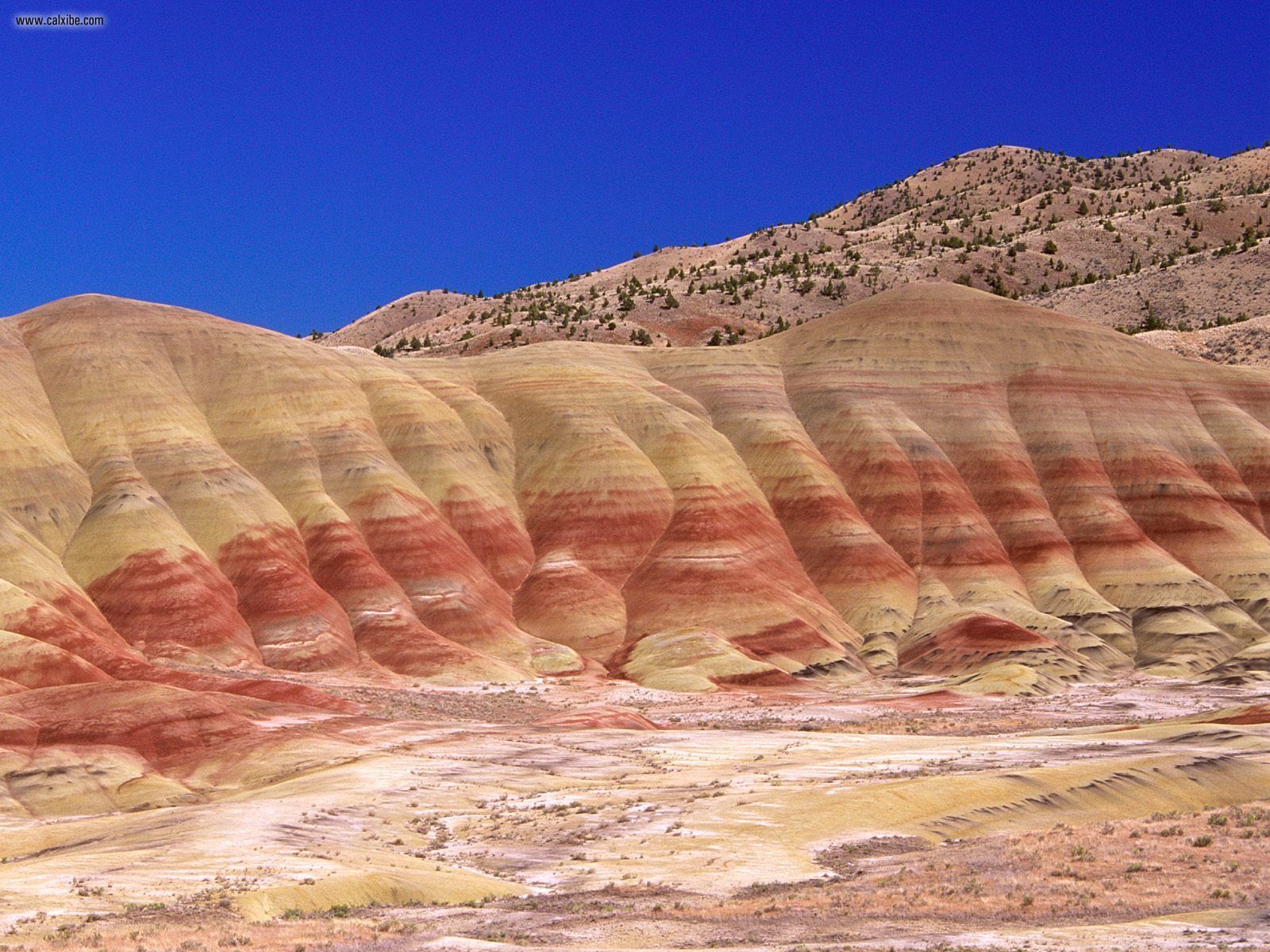The John Day Fossil Beds are a remarkable geological treasure located in eastern Oregon, celebrated for their stunning landscapes and rich fossil deposits. This unique area offers a glimpse into the distant past, showcasing an array of ancient plants and animals that once roamed the Earth millions of years ago. Visitors flock to this site not only for its scientific significance but also for the breathtaking views and outdoor adventures available throughout the park.
Established as a national monument in 1975, the John Day Fossil Beds National Monument comprises three distinct units: the Sheep Rock Unit, the Painted Hills Unit, and the Clarno Unit. Each of these units presents its own unique geological features and fossil finds, making it a haven for paleontologists and nature lovers alike. Whether you are hiking the trails or exploring the visitor centers, the rich history encapsulated in the fossil beds offers an alluring experience for all who venture here.
The John Day Fossil Beds are not only a testament to the Earth's geological history but also serve as a reminder of the ever-changing environments that have shaped our planet. From lush forests to arid plains, the fossil record found in this region reveals the evolution of ecosystems over millions of years, providing valuable insights into climate change and biodiversity. So, are you ready to uncover the secrets hidden within the John Day Fossil Beds?
What Makes the John Day Fossil Beds Unique?
The John Day Fossil Beds stand out for several reasons, including:
- Rich fossil deposits that date back over 40 million years.
- Three distinct units, each with unique geological features.
- Variety of plant and animal fossils, including ancient mammals and flora.
- Stunning landscapes that attract photographers and nature enthusiasts.
What Types of Fossils Can You Find at the John Day Fossil Beds?
The fossil beds are home to an astonishing variety of prehistoric life, including:
- Mammals: Fossils of ancient horses, camels, and even rhinos.
- Plants: Fossils of trees and plants that once thrived in the region.
- Insects: Preserved remains of insects that existed millions of years ago.
- Fish: Fossilized remains of fish that swam in ancient waterways.
Why Should You Visit the John Day Fossil Beds?
Visiting the John Day Fossil Beds offers numerous benefits, including:
- Educational opportunities for all ages.
- Access to guided tours and educational programs.
- Stunning hiking trails with picturesque views.
- A chance to connect with nature and learn about our planet's history.
How Can You Prepare for Your Visit to the John Day Fossil Beds?
To make the most of your visit, consider the following tips:
- Check the weather beforehand, as conditions can change rapidly.
- Wear comfortable hiking shoes and bring plenty of water.
- Plan your itinerary to include all three units of the monument.
- Visit the visitor centers for educational resources and maps.
What Are the Best Times to Visit the John Day Fossil Beds?
The ideal times to visit the John Day Fossil Beds are during the spring and fall when temperatures are mild, and the flora is in full bloom. Summer can be quite hot, while winter may bring snow and cold temperatures. Plan your trip accordingly to enjoy the best of what this national monument has to offer.
What Activities Can You Enjoy at the John Day Fossil Beds?
While exploring the John Day Fossil Beds, visitors can partake in a variety of activities, including:
- Hiking on scenic trails that showcase the monument's beauty.
- Photography opportunities to capture the vibrant landscapes.
- Participating in ranger-led programs to learn about the area's history.
- Fossil hunting in designated areas (with proper permits).
What Should You Know About the Conservation Efforts at the John Day Fossil Beds?
Conservation efforts at the John Day Fossil Beds are crucial for preserving this unique environment and its fossil resources. The National Park Service works tirelessly to protect the delicate ecosystems, educate the public, and conduct ongoing research. By visiting and supporting the park, you contribute to these essential conservation efforts, ensuring that future generations can continue to learn from and appreciate this remarkable site.
Conclusion: Why the John Day Fossil Beds Should Be on Your Bucket List?
The John Day Fossil Beds offer a distinctive opportunity to connect with the Earth's history, showcasing the beauty of nature alongside invaluable scientific insights. Whether you are a seasoned paleontologist, a nature lover, or just someone looking to explore the great outdoors, the John Day Fossil Beds provide a unique experience that should not be missed. So, pack your bags and embark on a journey to this geological wonder, where the past comes alive in the most captivating ways.
You Might Also Like
Discovering The Charm Of New Orleans City HallDiscovering The Heartbeat Of Los Angeles: Mom's Bar
Experience The Thrill At Hollywood Casino Indiana
Exploring The World Of AMTA Mock Trial: A Pathway To Legal Acumen
Finding The Right Help: How To Reach Help Me Howard Contact Phone Number
Article Recommendations
- Tony Hinchcliffe Parents
- Eric Graise
- Vegamovies Archive 2016
- Ana Kasparian Net Worth
- Steelo Brim Relationship
- David Muir New Wife
- Brooke Monk Nude
- Jason Luv Hospitalized
- Noah Kahan Ex Wife
- No Te Duermas Morena


